A member of the Asparagaceae family, the Dracaena genus consists of over 100 individual varieties of these popular houseplants.
- Related: Houseplant Grow Guides
This article covers a general overview of the dracaena genus, and how to care for and grow the dracaena family of plants. There will be more specific how to care guides for dracaena varieties.
Dracaena Varieties Overview
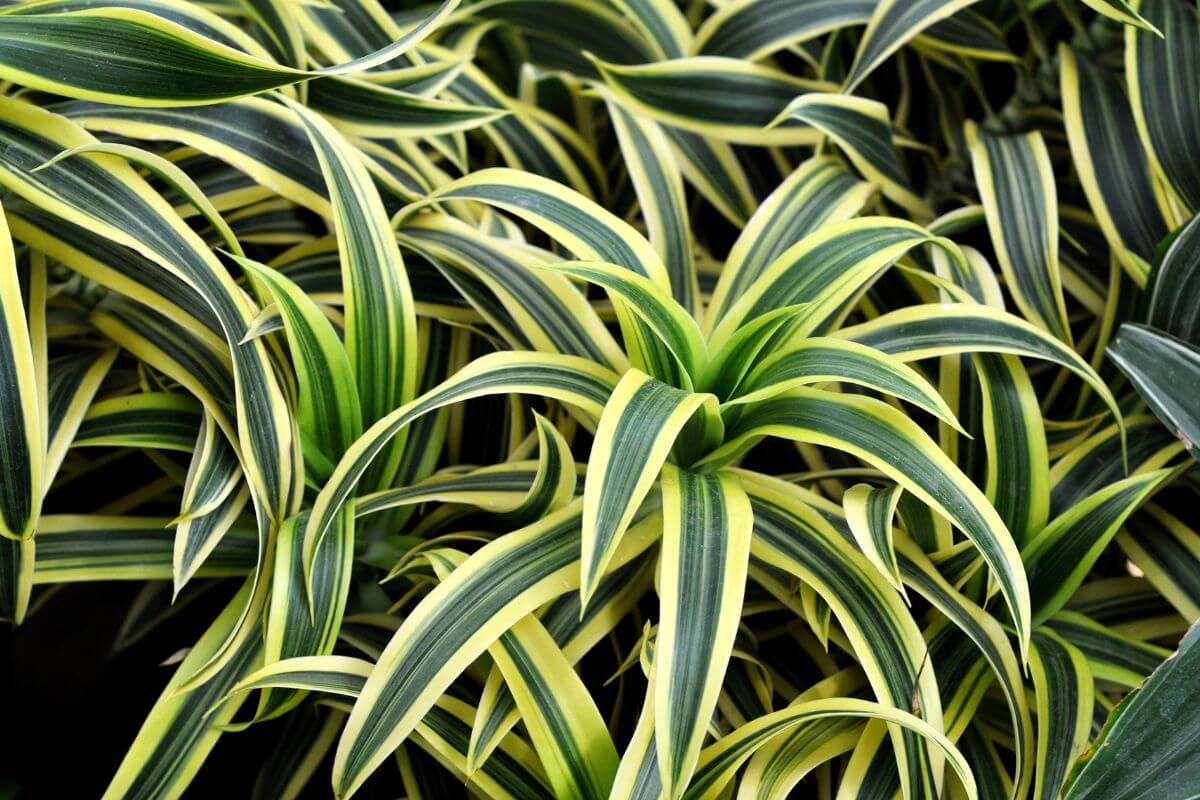
In subtropical climates from Africa, southern Asia, and Australia, Dracaena plants can be grown indoors and outdoors. If cultivated indoors, a dracaena may reach a height of about three feet, with leaves that can grow to a foot in length and several inches in width.
Thanks to beautifully colored patterns on impressive foliage, the dracaena is a welcome addition to the decor of any room, and it contributes to improving air quality according to NASA.
A curious detail of the dracaena is that it has a secondary meristem for thickening. The meristem is a type of tissue that helps plants grow. In the case of the Dracaena, this secondary meristem facilitates the growth of large roots.
When you select a dracaena for your home or office, you will generally choose among a variety of dracaena that feature leaves shaped like spears and have several cane-like stems.
However, other dracaena which are grown from roots similar to rhizomes may be advertised with different names that are not immediately identifiable with the dracaena family.
Popular Dracaena Varieties
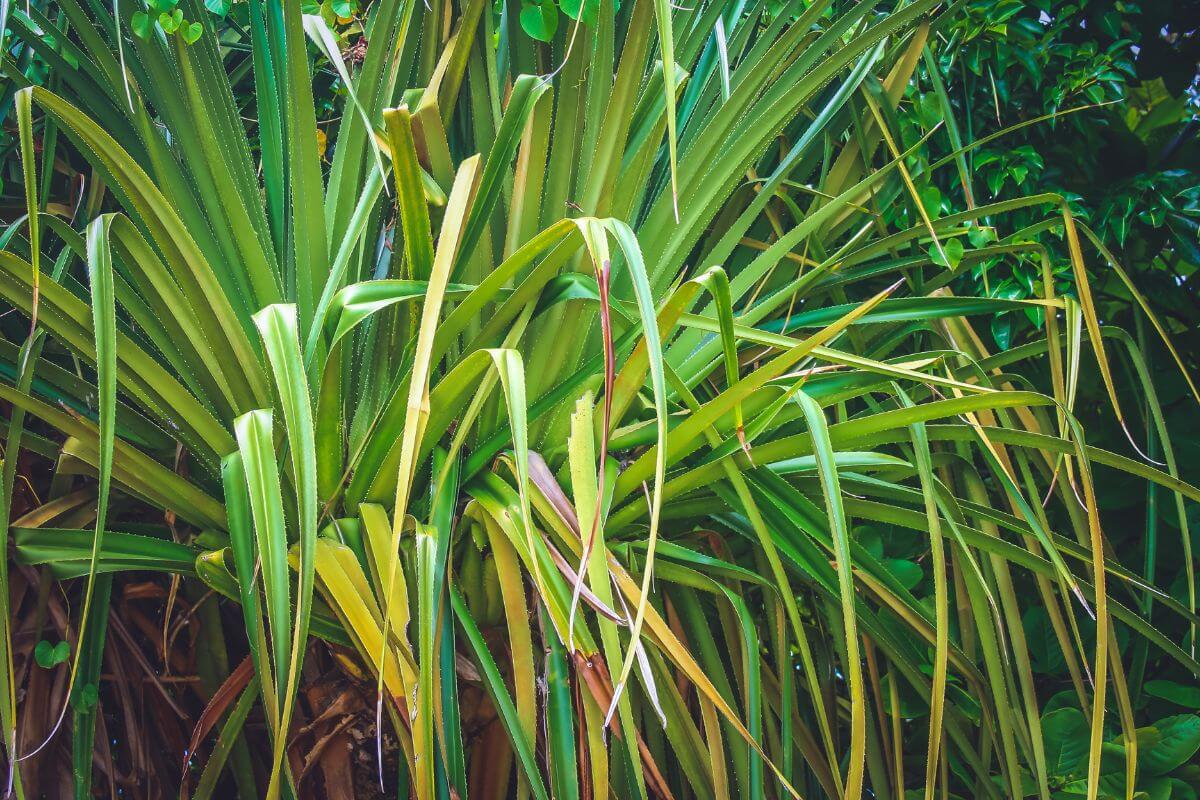
The most common and popular cultivar of the dracaena houseplant is a variegated kind with bright yellow edges named “Song of India.”
Popular varieties of dracaena found in nurseries or florist shops include:
- Dracaena deremensis “Lemon Lime” – Featuring long leaves shaped like swords that grow from a very thick cane, this is a low-light, hardy plant that boasts green and white stripes. It will grow slowly and boast multi-tiered rosettes of foliage along with new shoots emerging from the main stems. When cultivated outdoors, it will grow to be quite grand, but indoors will normally remain under ten feet in height.
- Dracaena draco “Dragon’s Blood, Canary Islands Dragon Tree, or Drago” – This multi-named dracaena is a slow-growing evergreen succulent tree is a member of the agave family. The Dragon’s Blood is related to both the yucca plant and the corn plant, but is found less commonly due to its impressive size.
- Dracaena fragrans “Corn Plant” – This type of dracaena may also be called a “mass cane” plant. It is less expensive than other varieties, featuring wood-like canes that are thick with leaves shaped like straps. Natural light in moderation is ideal, but it will do fine in a low-light environment. This is a slow-growing dracaena and does not require a great deal of maintenance for it to thrive. When indoors, it may reach heights of six feet, while outdoors it can grow as much as twenty feet. Read the Dracaena Fragrans Corn Plant Care Guide.
- Dracaena marginata “Madagascar Dragon Tree” – This red-edged dracaena, is an evergreen plant with multiple stems that can reach heights of eight to fifteen feet and expansive widths of three to eight feet when well cared for. Leaves are slim similar to grass and purplish red in tint. This plant will not do well in a low-light location, and it is not frost tolerant, so generally, it will be found indoors. It is drought tolerant and quite forgiving if you forget to care for it. Read the Dragon Tree Plant Care Guide.
- Dracaena reflexa “Song of India” – The dracaena reflexa, also known as a pleomele, is probably the most common of the Dracaena. It features striking, pointed and narrow green leaves that are highlighted by yellow stripes. This plant does very well indoors as a houseplant and outdoors in a partially shaded location like a porch or patio.
- Dracaena sanderiana “Lucky Bamboo” – These feature bamboo-like stems that can be cultivated to curl and twist. It may grow to be several inches tall in low-light conditions or to several feet if exposed to bright light. It is generally cultivated in water.
- Dracaena surculosa “Florida Beauty” – The fast growing Gold Dust Dracaena features broad leaves with brilliant, creamy yellow spots. These are smaller than other dracaena varieties, usually staying under two feet tall.
General Dracaena Plant Care Overview
Soil for the Dracaena
The dracaena family of plants prefer rich, well-draining with a slightly acidic pH level of 6.0 to 6.5.
Light for the Dracaena
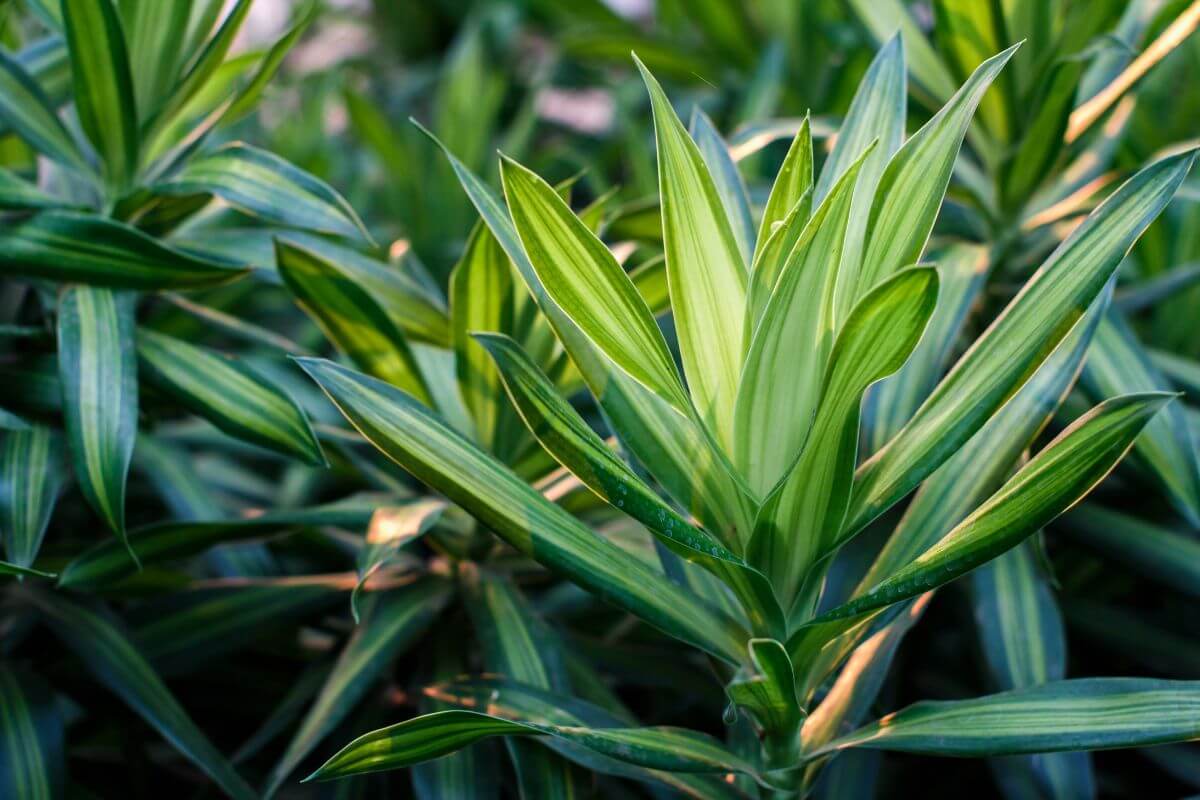
Most dracaenas will do well with partial shade, however, a few can withstand full direct sunlight for short periods of time, like the Dragon’s Blood (dracaena draco).
Water and Humidity for the Dracaena
The soil bed should not dry out completely, so your dracaena will need regular watering. However, some dracaena plants are more drought-tolerant, such as the Dragon Tree (dracaena marginata).
Dracaena plants generally prefer humidity levels between 50% and 70%. If the soil is overwatered and they get too wet, their roots rot. If they don’t have enough moisture, then their foliage wilts.
Temperature for the Dracaena
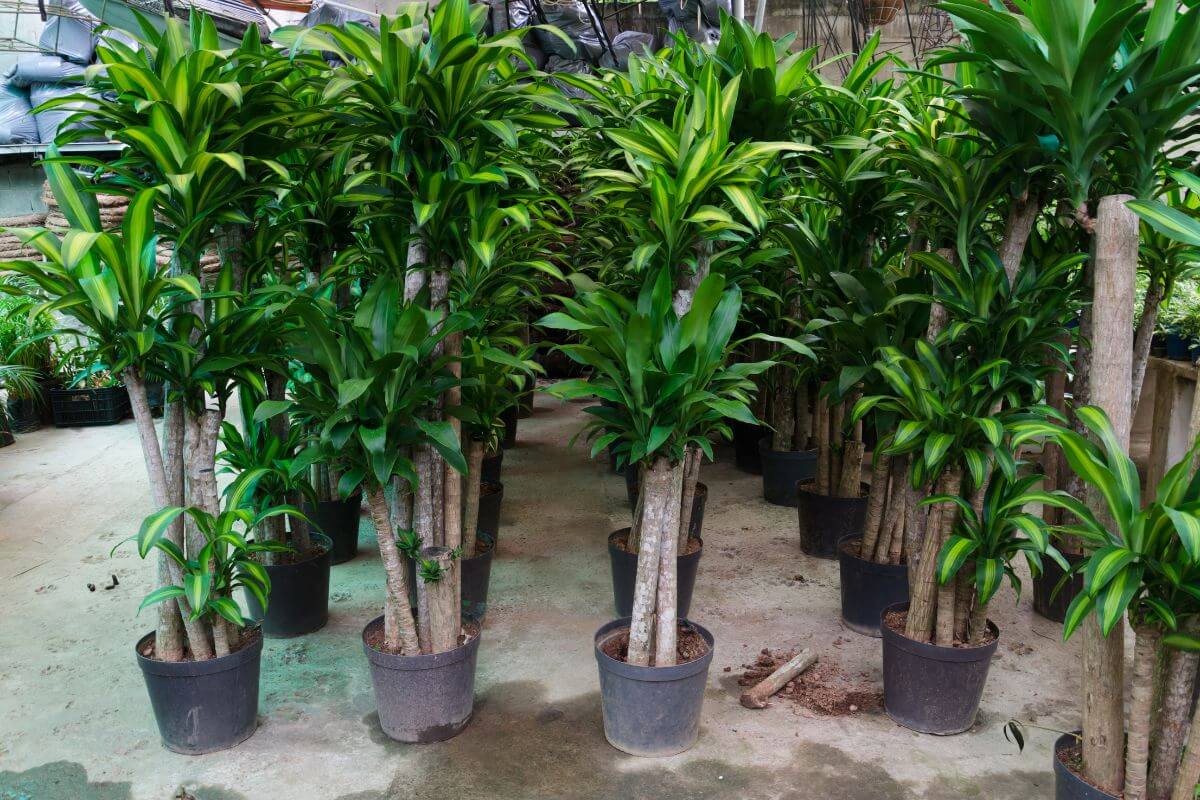
The dracaena species will prefer temperatures on the warmer side above 65° Fahrenheit. The dracaena draco is an exception as it can tolerate temperatures as low as 50°F.
Fertilizer for the Dracaena
If you don’t have a great deal of time, you can use slow-release fertilizer pellets at the beginning of the growing season. Otherwise, a balanced water-soluble fertilizer once a week during growing season would be better.
Dracaena Pruning and Repotting
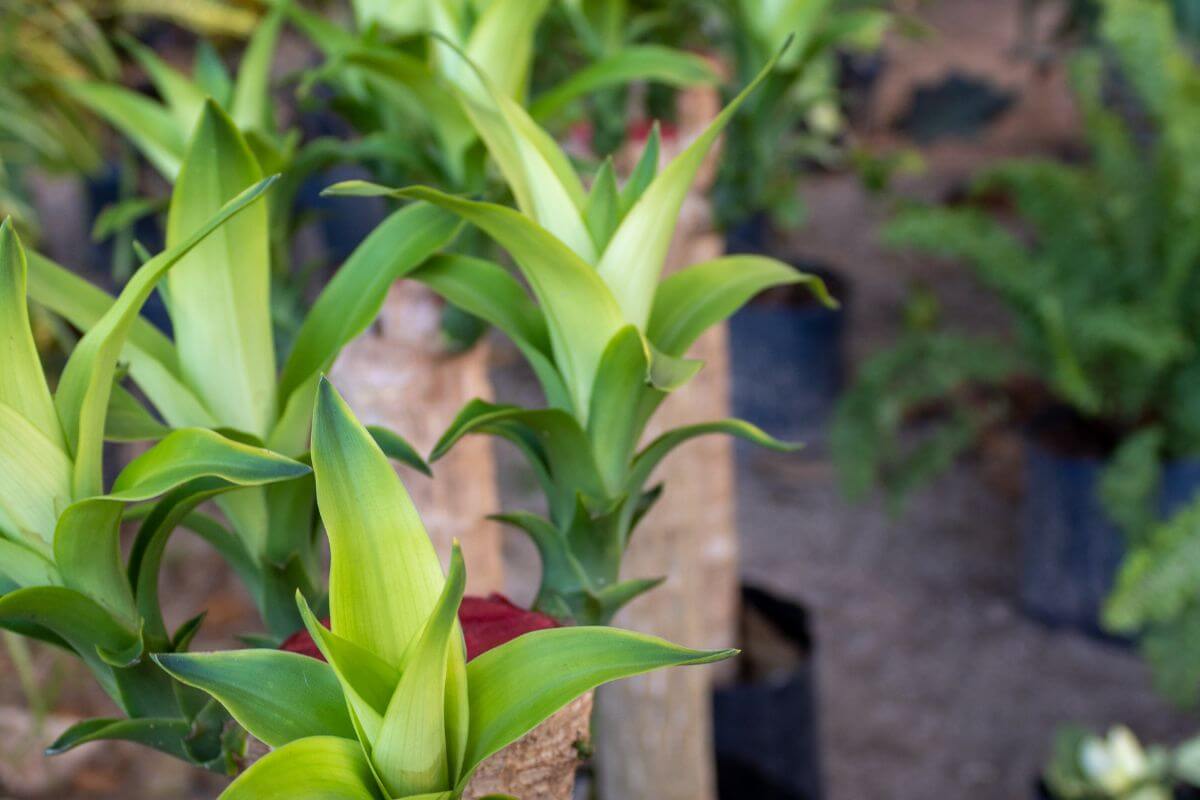
Dracaena that grow outdoors will probably not require any pruning. Indoor potted plants will achieve denser foliage if pruned, allowing for a more rounded appearance. Pruning should be done during the second half of spring into early summer
Often the leaves at the bottom of a dracaena plant may begin to yellow when they have completed their normal lifespan. They can be trimmed off. If the plant grows too tall for your space, you can cut off the tops of the canes.
Dracaena plants should be repotted once every two years and moved to a slightly larger container. You can also repot whenever you need to due to overwatering, infection, or pest infestation issues.
Propagating the Dracaena
Depending on the species, some Dracaena plants can be cultivated when a section of cane is cut and laid sideways in a pot of moist soil.
With mature plants, the top may be cut off, treated with rooting hormone, and repotted.
Air layering can be an alternative for larger varieties where the stem is cut and wrapped in sphagnum moss, then covered in plastic, and secured until new roots are formed.
Dracaena Toxicity to Pets
According to the ASPCA (American Society for the Prevention of Cruelty to Animals), the dracaena is considered toxic to cats and dogs.
Take your pet immediately to a veterinarian if you see any symptoms of poisoning: excessive drooling, vomiting, depression, dilated pupils, or other non-normal actions.
Dracaena Varieties Final Thoughts
The dracaena family of plants are generally low-maintenance plants. Problems mostly stem from overwatering.
Soil beds should be kept moist, but not soggy. Low light or partial shade is fine for most varieties. Now, it’s just a matter of which beautiful dracaena variety you prefer.
Here are more houseplant care guides for you to check out:


